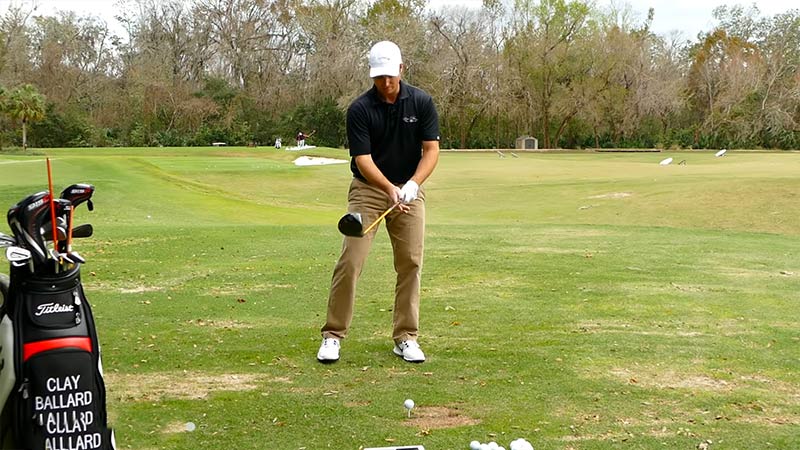Playing golf is a leisurely and enjoyable sport for many, but it can sometimes come with an unexpected drawback: hand pain. If you’ve ever wondered, “Why do my hands hurt after golf?” you’re not alone.
In this blog post, we will explore the common causes of hand pain associated with golf and provide valuable insights on how to prevent and alleviate this discomfort.
From improper grip techniques to overuse injuries and inadequate warm-up routines, there are several factors that contribute to sore hands after a round of golf.
Realizing the root causes is the first step in finding effective solutions to keep your hands pain-free and enhance your golfing experience. So, stay focused.
Is Playing Golf Painful?
Playing golf is not inherently painful, but it can pose physical and mental challenges.
Golf is a leisurely sport that requires skill and technique, and like any physical activity, it may lead to discomfort or pain if not executed correctly.
Common physical issues can include back or joint pain, particularly in cases of improper swing mechanics.
Mental aspects, such as frustration or stress from the game’s demands, may also contribute to perceived discomfort.
However, with proper instruction, warm-up routines, and equipment, golf can be a low-impact and enjoyable sport.
Pain levels can vary among individuals, depending on their experience, physical condition, and how they approach the game. So, golf can be a rewarding and relatively pain-free activity for many enthusiasts.
Why Do My Hands Hurt After Golf?
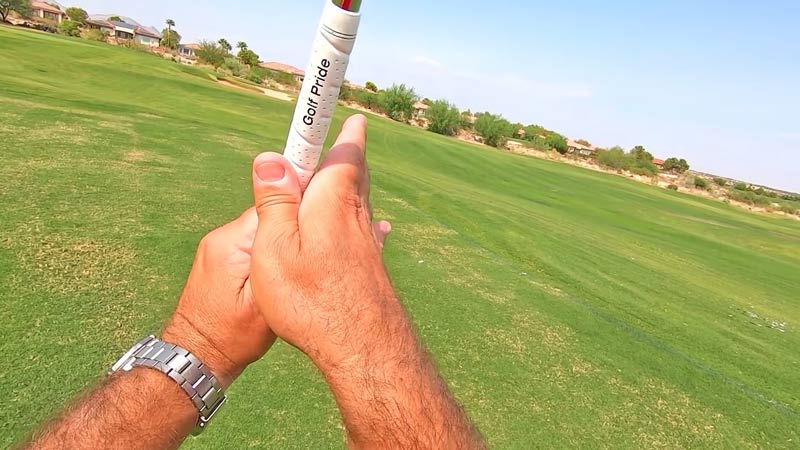
Experiencing hand pain after playing golf is not uncommon and can be attributed to several factors.
Gripping the golf club tightly or with poor hand positioning can strain the muscles and tendons in your hands, leading to discomfort. Overuse of the hands, especially during a long round of golf, can also contribute to hand pain.
Additionally, repetitive motions involved in swinging the club can lead to inflammation or overuse injuries in the wrist or fingers.
It’s essential to ensure a proper grip, maintain flexibility, and use appropriate swing mechanics to reduce the risk of hand pain.
If the pain persists or worsens, it’s advisable to consult a medical professional or golf instructor to address any underlying issues and receive guidance on improving your technique to prevent future discomfort.
What Causes Hand Pain from Golf Grip?
Hand pain resulting from the golf grip can be attributed to several factors:
Incorrect Grip Pressure
Gripping the golf club too tightly or with uneven pressure can cause strain on the muscles and tendons in your hands.
This excessive grip pressure can lead to discomfort, especially in the area where the club handle makes contact with your hands.
Poor Hand Positioning
An improper grip can place excessive stress on specific areas of your hands, leading to pain.
Common issues include a “death grip” that tenses up the hands or having the hands too far apart on the club, which can cause uneven pressure distribution and discomfort.
Overuse and Repetitive Motion
Golf involves repetitive swinging motions, and if you overdo it without proper technique, it can lead to overuse injuries.
The repetitive nature of swinging can strain the hand muscles, tendons, and ligaments, particularly if you are a frequent golfer.
Inadequate Warm-Up
Failing to warm up adequately before a round of golf can leave your hands and muscles cold and less pliable.
This lack of preparation can increase the risk of hand pain as you subject your hands to the forces of the golf swing without proper readiness.
Gripping Size and Material
The size and material of your club grips can impact hand comfort. Grips that are too small or too large may force you to grip the club awkwardly, leading to discomfort.
Likewise, grips that are worn out or made of hard materials can contribute to hand pain. Such as left-hand hurts after golf and hand sore after golf.
To prevent hand pain from the golf grip, it’s crucial to learn and maintain a proper grip, warm up effectively, and ensure that your equipment is suited to your hand size and playing style.
How to Treat Sore Hands After Golf?
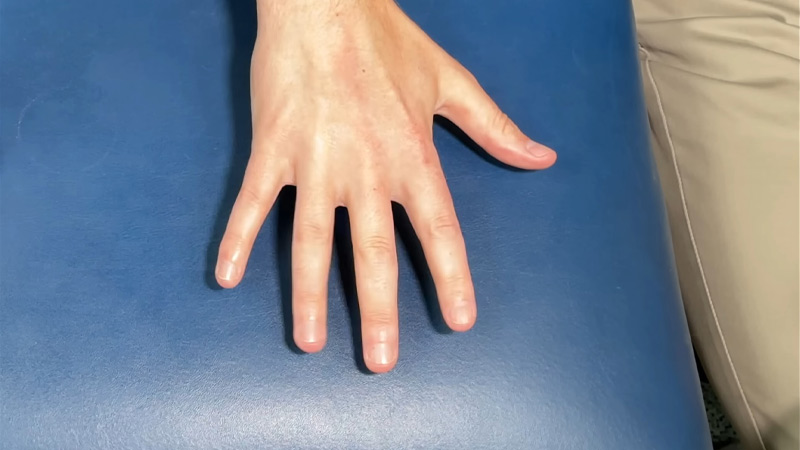
If you’re experiencing sore hands after a game of golf, there are several steps you can take to alleviate discomfort and promote healing:
Rest and Ice
- Give your hands a break from any strenuous activities, including golf, to allow them time to recover.
- Apply an ice pack wrapped in a cloth to the sore areas for 15-20 minutes every couple of hours. This can help reduce inflammation and numb the pain.
Stretch and Massage
- Gently stretch your fingers, wrists, and hands to improve flexibility and relieve tension. Perform simple hand and wrist stretches regularly.
- Consider a gentle hand massage to promote blood flow and relax sore muscles. You can use a lotion or oil for better results.
Over-the-Counter Pain Relief
Non-prescription anti-inflammatory medications, such as ibuprofen or aspirin, can help reduce pain and inflammation. Follow the recommended dosage instructions.
Compression and Support
Wearing a wrist brace or compression glove can provide support and reduce swelling. Be sure not to make it too tight, as that can cause further discomfort.
Hand Exercises and Rehabilitation
Once the pain subsides, engage in hand-strengthening and rehabilitation exercises to prevent future soreness. A physical therapist can guide you in a personalized program.
If sore hands persist or worsen despite these measures, consult a medical professional.
They can assess your condition, recommend additional treatments, and rule out any more serious underlying issues.
Tips to Avoid Hands Hurting After Golf
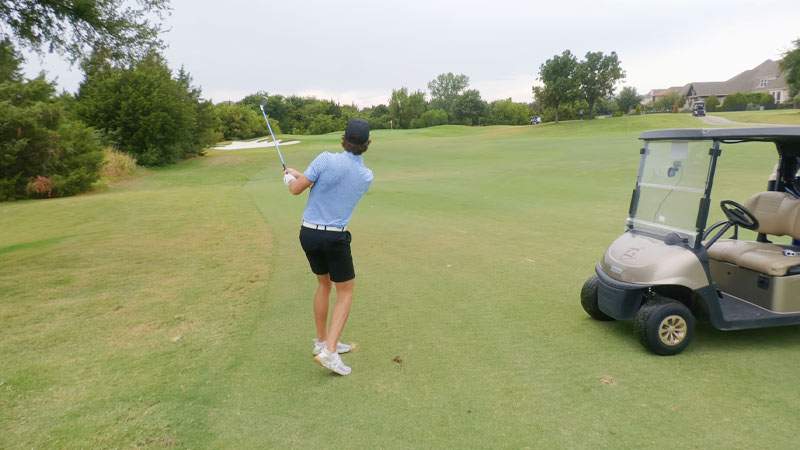
To prevent hand pain and discomfort after playing golf, consider these tips:
Proper Grip Technique
Ensure you have a correct and relaxed grip on the golf club. Avoid gripping too tightly, as this can strain your hands and hands ache after golf.
Seek guidance from a golf instructor to find the right grip pressure and hand positioning for your swing.
Regular Warm-Up Exercises
Prior to teeing off, engage in hand and wrist warm-up exercises. Rotate your wrists, flex and extend your fingers, and gently stretch your hands.
This will prepare your hands and wrists for the repetitive motions of golf.
Use Proper Equipment
Make sure your club grips are the right size and material for your hands. Ill-fitting or worn-out grips can lead to discomfort. Consider getting custom-fitted grips if necessary.
Manage Swing Mechanics
Work with a golf instructor to refine your swing mechanics. A smooth, balanced swing can reduce the stress on your hands and minimize the risk of injuries.
Strengthen Hand and Forearm Muscles
Incorporate hand and forearm strengthening exercises into your fitness routine. Stronger muscles provide better support and stability during your golf swing. It will also lessen hand hurts after golf.
Pace Yourself
Avoid overexertion by not playing too frequently or for extended periods. Allow your hands time to recover between rounds, especially if you’ve been experiencing discomfort.
By following these tips, you can reduce the likelihood of experiencing hand pain after playing golf, allowing you to enjoy the game without discomfort or risk of injury.
When to Visit A Doctor for Sore Fingers After Golf?
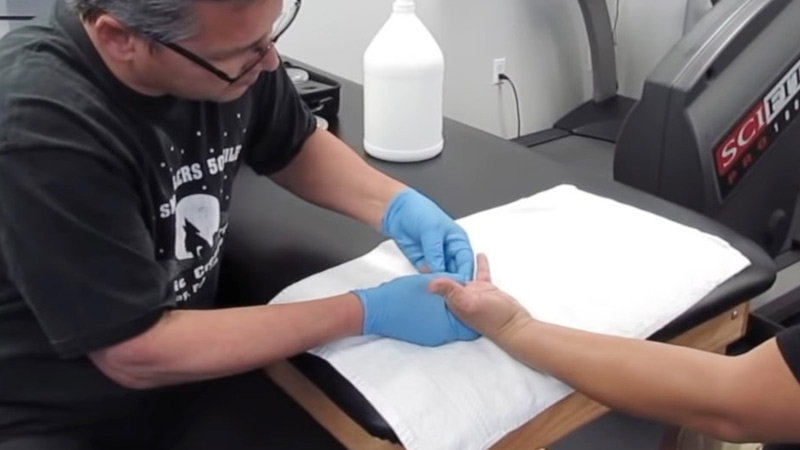
If you’re experiencing sore fingers after playing golf, it’s essential to monitor the severity and persistence of the discomfort.
While many cases can be managed with self-care, there are situations in which it’s advisable to consult a doctor:
Persistent Pain
If the soreness in your fingers persists for more than a few days and doesn’t improve with rest, ice, and over-the-counter pain relievers, it may be a sign of a more serious issue. Don’t ignore chronic discomfort.
Swelling, Redness, or Bruising
Any significant swelling, redness, or bruising in your fingers could indicate an injury or inflammation that requires medical attention. These symptoms may suggest conditions like tendonitis or even a fracture.
Loss of Function
If you experience a loss of strength, range of motion, or dexterity in your fingers after playing golf, it’s a concerning sign. Fingers hurt after golf is bad. This can indicate a more serious injury that should be evaluated by a medical professional.
Numbness or Tingling
Numbness, tingling, or a pins-and-needles sensation in your fingers can be indicative of nerve compression or damage.
Such symptoms should not be ignored, as they may require specialized treatment.
Preexisting Conditions
If you have preexisting medical conditions or a history of hand or finger injuries, it’s wise to consult a doctor sooner rather than later.
Chronic conditions like arthritis can be aggravated by golf, and early intervention can be crucial.
In any of the above situations, it’s a good idea to seek medical advice from a healthcare provider or a specialist, such as an orthopedic surgeon.
They can assess your condition, provide a proper diagnosis, and recommend an appropriate treatment plan to address the underlying issue and prevent further complications.
FAQs
What is the home remedy for hands sore after golf?
A common home remedy for sore hands after golf is to soak them in warm water with Epsom salt to reduce inflammation and relieve muscle tension. Gentle stretching exercises can also help alleviate discomfort.
Are fingers sore after golf dangerous?
Sore fingers after golf are typically not dangerous; they are usually a result of overuse or improper grip. Rest, ice, and gentle stretches can help with recovery.
Why did my right hand hurt after golf?
Right-hand pain after golf may result from improper swing mechanics or gripping too tightly. Adjusting your grip and taking breaks to rest your hand can help alleviate discomfort.
What makes hand pain after golf?
Hand pain after golf can be caused by overuse, incorrect technique, or an inadequate warm-up. Focusing on proper form and using supportive gear like gloves can reduce strain and discomfort.
What balm is good for sore hands from golf?
Balms containing ingredients like arnica, menthol, or CBD can provide relief for sore hands after golf. Apply the balm to the affected area and gently massage it in for soothing relief.
Wrapping Up
Hand pain should not be an inevitable part of your golfing experience.
By addressing the factors that lead to hand discomfort and implementing the strategies we’ve discussed, you can enjoy your time on the golf course without the nagging pain in your hands.
Remember, the key is proper technique, adequate warm-up, and a commitment to maintaining your hand health to enhance your game and overall well-being.
Golf can be a lifelong passion, and taking care of your hands ensures that you can continue to tee off pain-free for years to come. Thank you for supporting us.

